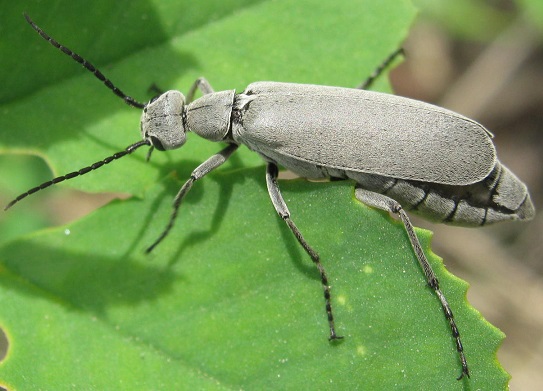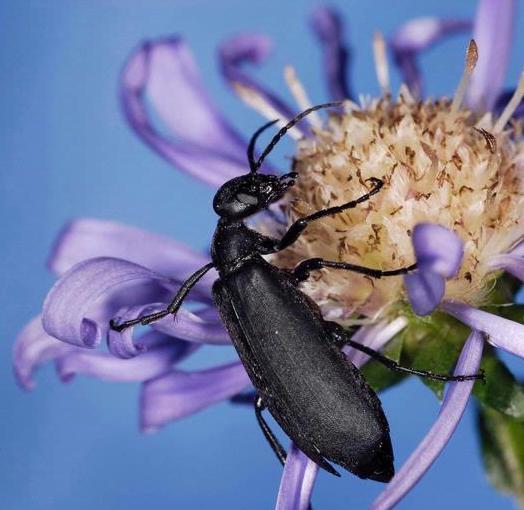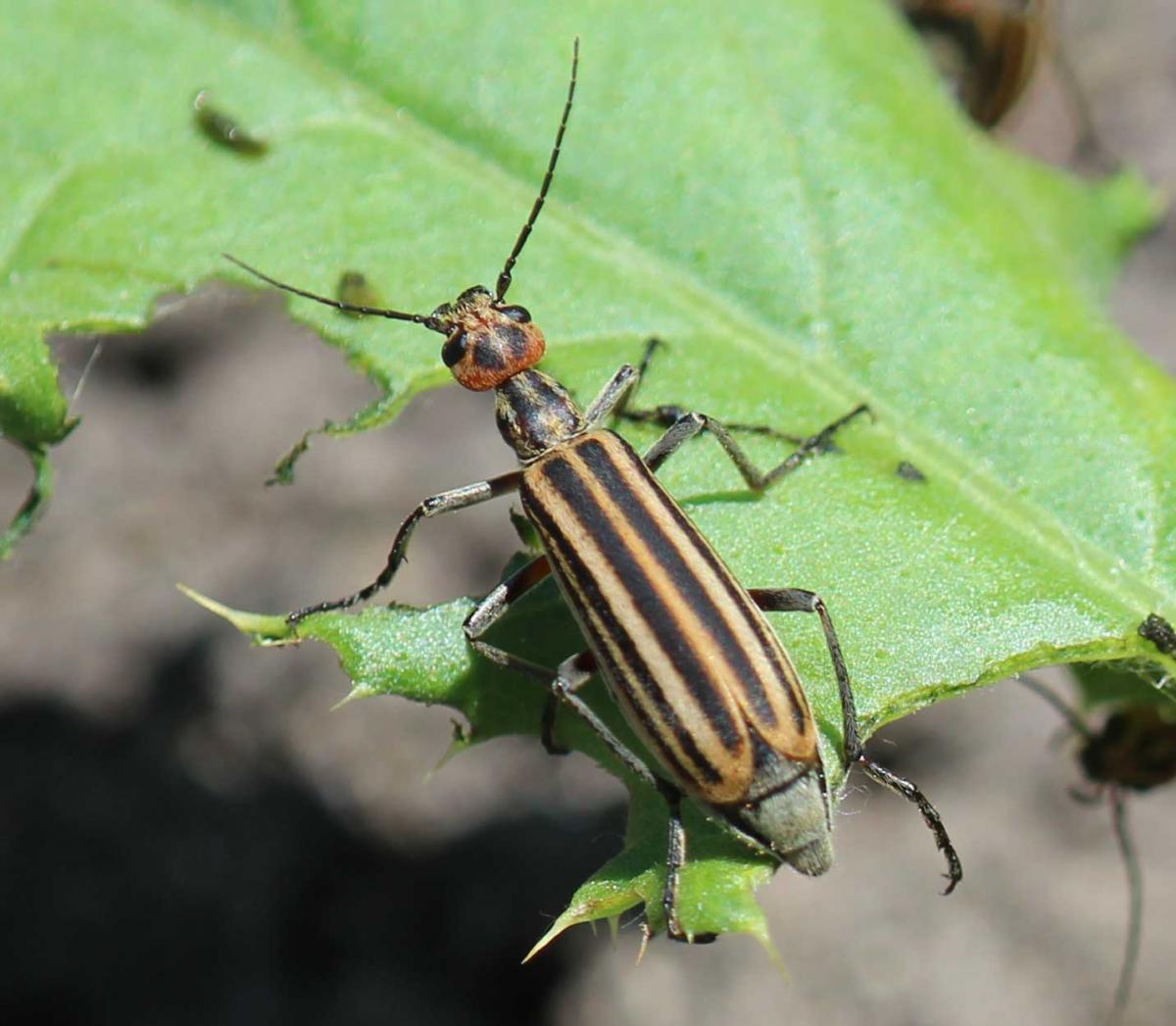Blister Beetles (Family Meloidae)
At least seven species of blister beetles may be found in Kansas alfalfa. Beetles may be present in all cuttings of hay, but commonly occur in the second, third and fourth cuttings. Three-striped, gray and black species are all common and may occur as mixed-species swarms. Large aggregations may occur, but are typically transient. Avoid working fields with heavy equipment when aggregations are present, as crushed beetles can contaminate hay.
|
|
|
|
The threestriped blister beetle, Epicauta lemniscata, contains especially high levels of cantharidin, which is very toxic to horses. (Adam Varenhorst) |
Foliar damage to alfalfa usually occurs in midsummer when fields may host large aggregations of beetles that can damage blossoms and leaves. Horses have an adverse and sometimes fatal reaction when fed hay containing crushed blister beetles due to the toxin cantharidin they contain. Symptoms of toxicity in horses include sores on the tongue and in the mouth, sweating, diarrhea, blood in the feces, and frequent urination. Cattle may also exhibit mouth sores. Anyone suspecting cantharidin poisoning in horses or livestock should contact their local veterinarian.
Reduce the chances of hay contamination by blister beetles by avoiding the use of crimpers or crushers on cuttings from mid-June through September, or by simply not feeding these cuttings to horses, as there are no practices that can guarantee hay is completely free of blister beetles. Kansas studies have documented blister beetle mortality during sickle-bar mowing where tractors drive over the blister beetles, crushing them into the hay. In these trials, the equipment that caused the least blister beetle mortality was a self-propelled swather (mower/windrower combination) that had the crimper rollers removed so that unconditioned hay was delivered into a windrow straddled by the unit’s wide-set wheels. Virtually no crushing of the hay and blister beetles occurred. In this case, live blister beetles were able to leave the hay before it was baled. Even then, some beetles could be crushed into the hay at the ends of the field where the tires cross the windrows during turns. Avoid using hay from the ends of the fields for horse feed. Research has confirmed that dead blister beetles on the ground can be reincorporated into swathed hay by wheel traffic during raking and baling. It is therefore important to avoid killing blister beetles in alfalfa fields. This means being vigilant for beetles when fields are being worked and keeping heavy equipment out of the field when aggregations are present, as these will often disperse naturally within a day or two.
More information on blister beetles can be found in https://bookstore.ksre.ksu.edu/pubs/MF959.pdf.
Page last updated 03/21/2024 by J.P. Michaud.


